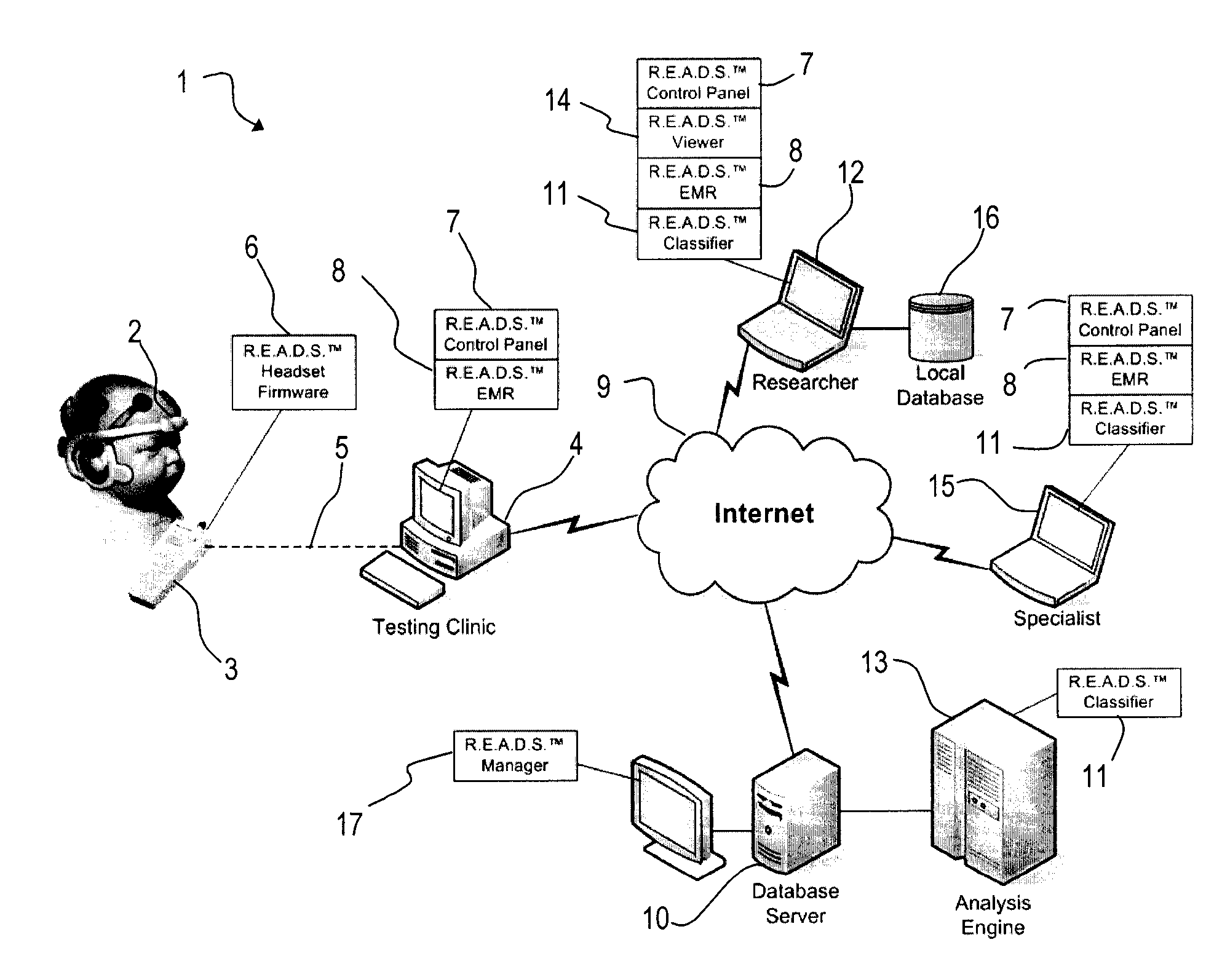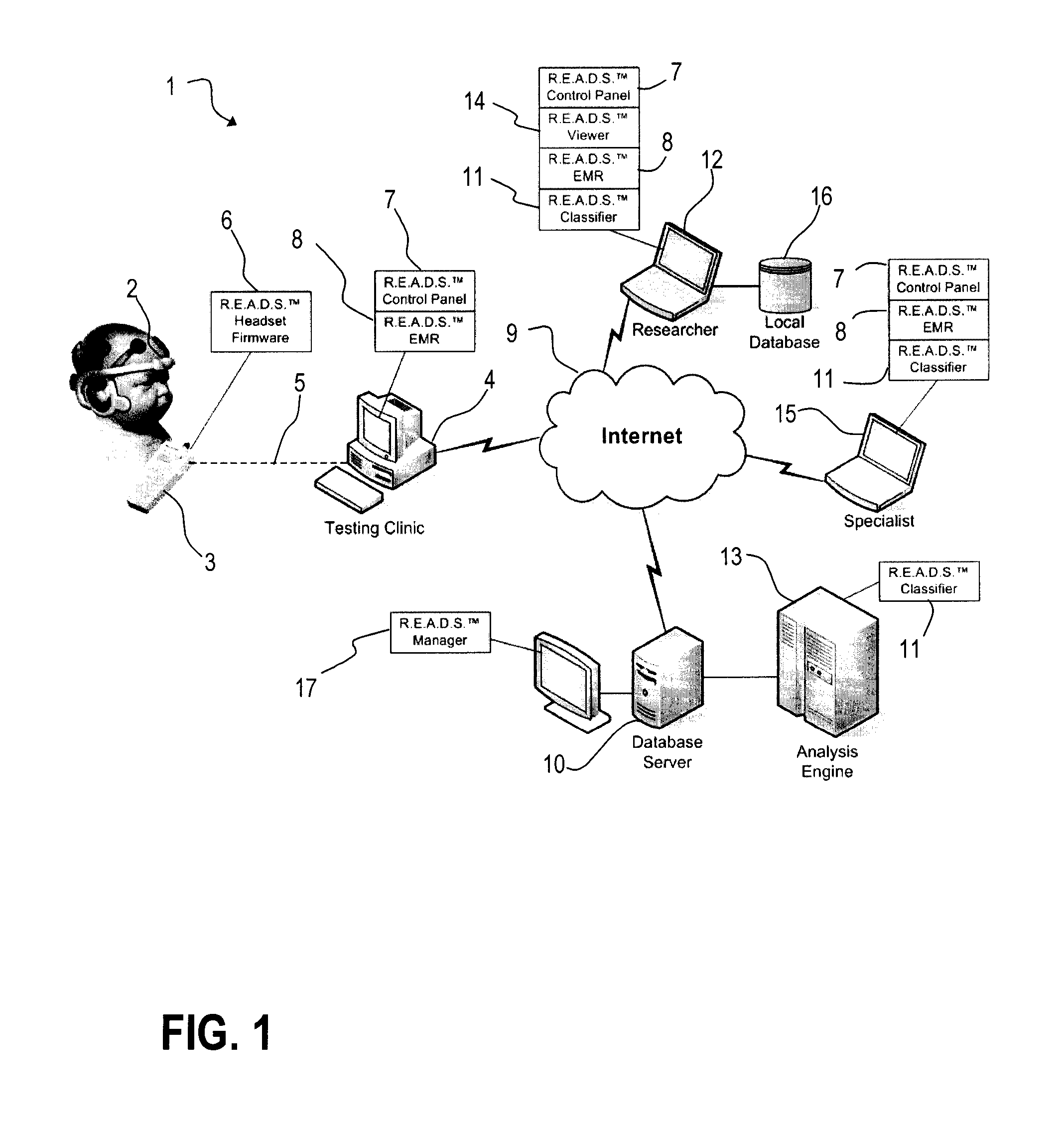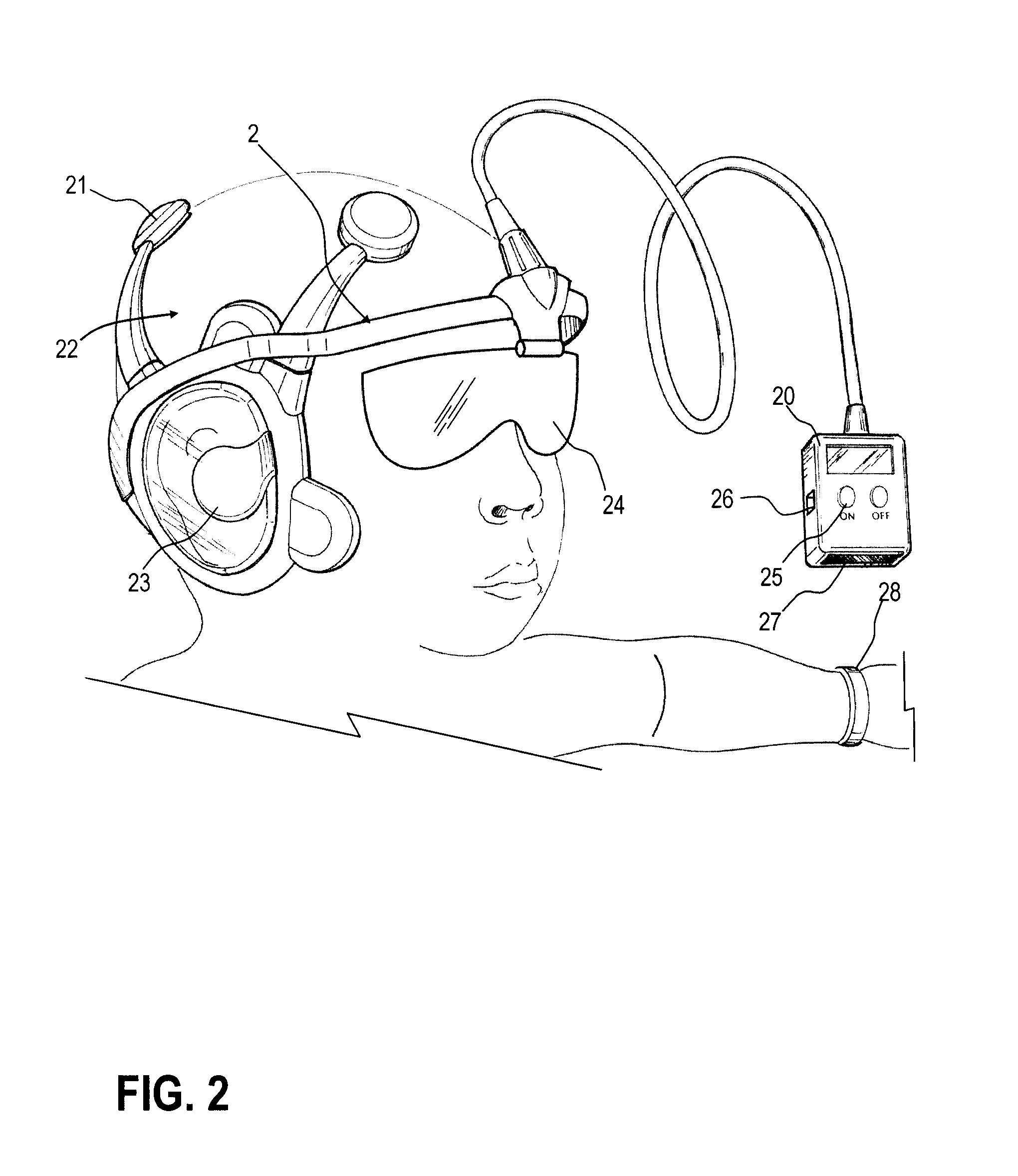Biopotential Waveform Data Fusion Analysis and Classification Method
a biopotential waveform and data fusion technology, applied in the field of biopotential waveform classification, can solve the problems of large number of experiments in order to collect sufficient single-trial data to form averages, inability to fully exploit the different but complementary information buried, and inability to classify differential biopotential activity. the effect of accurate classification
- Summary
- Abstract
- Description
- Claims
- Application Information
AI Technical Summary
Benefits of technology
Problems solved by technology
Method used
Image
Examples
Embodiment Construction
[0063]The general system description is provided in the cross-referenced application.
[0064]A general approach to data fusion is described in (1) L. Gupta, J. Phegley, & D. L. Molfese, “Parameter estimation and multichannel fusion for classifying averaged ERPs,” The Second Joint Meeting of the IEEE Engineering in Medicine and Biology Society and the Biomedical Engineering Society, October 23-26, Houston, Tex., 2002; (2) L. Gupta, B. Chung, J. Phegley, & D. L. Molfese, “A multi-channel EP fusion classification strategy for brain-computer interface development,” The 7 World Multiconference on Systemics, Cybernetics and Informatics, July 27-30, Orlando, Fla., 2003; and (3) L. Gupta, B. Chung, J. Phegley, & D. L. Molfese, “Multi-channel fusion models for the parametric classification of multi-category differential brain activity,” 26th Annual International Conference of the IEEE Engineering in Medicine and Biology Society, September 1-5, San Francisco, Calif., 2004, each of which is here...
PUM
 Login to View More
Login to View More Abstract
Description
Claims
Application Information
 Login to View More
Login to View More - R&D
- Intellectual Property
- Life Sciences
- Materials
- Tech Scout
- Unparalleled Data Quality
- Higher Quality Content
- 60% Fewer Hallucinations
Browse by: Latest US Patents, China's latest patents, Technical Efficacy Thesaurus, Application Domain, Technology Topic, Popular Technical Reports.
© 2025 PatSnap. All rights reserved.Legal|Privacy policy|Modern Slavery Act Transparency Statement|Sitemap|About US| Contact US: help@patsnap.com



